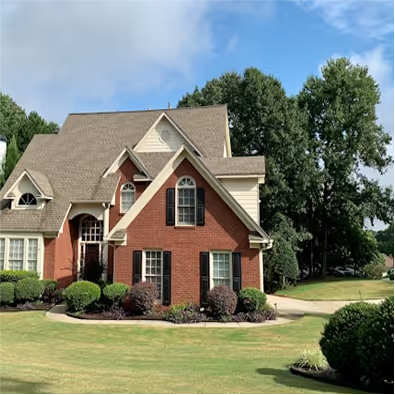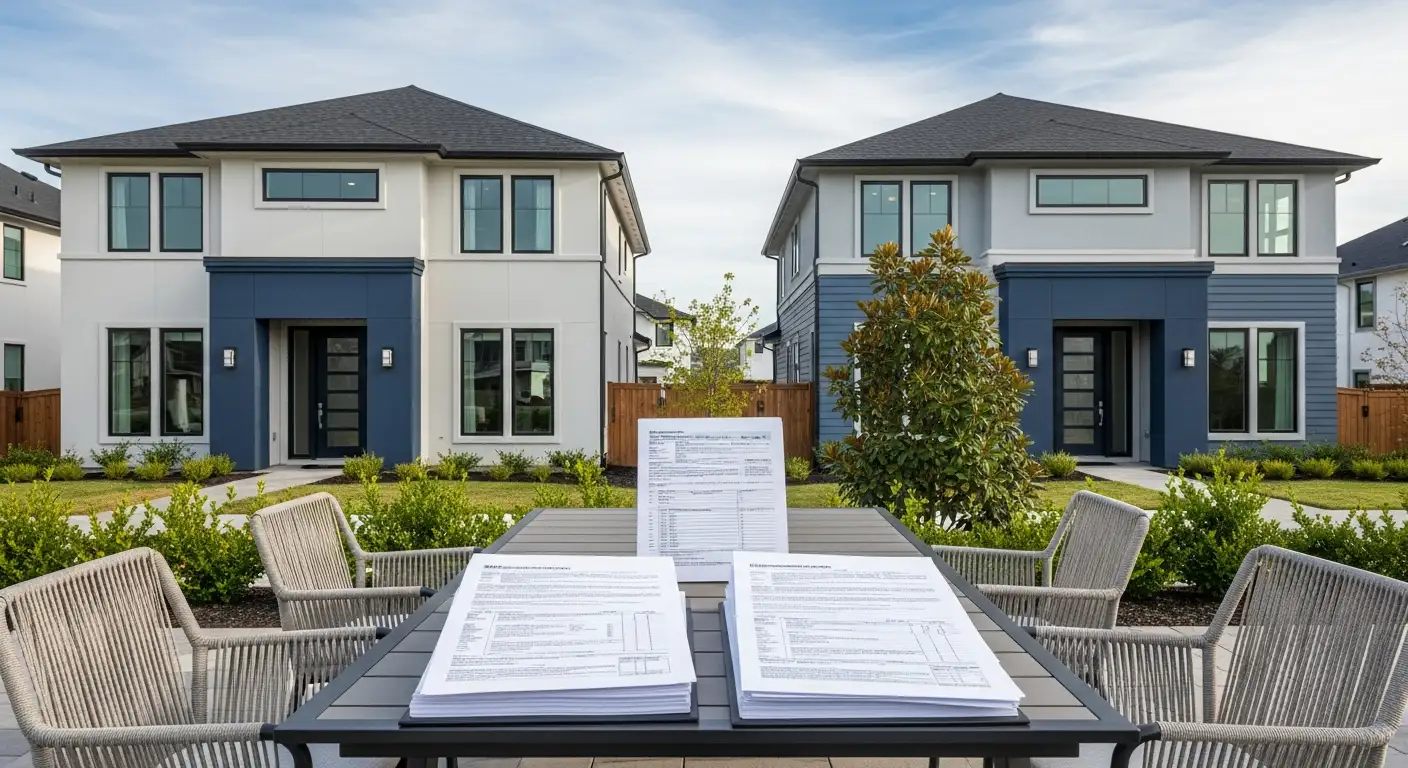Understanding the Move from FHA to Conventional Loans
Refinancing from an FHA loan to a conventional loan is increasingly attractive for homeowners aiming to reduce monthly payments and eliminate costly mortgage insurance premiums. This transition offers financial benefits by leveraging home equity, credit improvements, and favorable market conditions. Our article guides you through this refinancing journey, illuminating key considerations, requirements, processes, and benefits to empower homeowners in making well-informed decisions.
Why Homeowners Consider Refinancing from FHA to Conventional Loans

What are the benefits of refinancing from FHA to conventional loans?
Homeowners often look to refinance from FHA to conventional loans to take advantage of several financial benefits. One of the most significant is the potential elimination of mortgage insurance premiums. FHA loans require ongoing mortgage insurance premiums (MIP), while conventional loans only require private mortgage insurance (PMI) if the borrower has less than 20% equity. With at least 20% home equity, refinancing to a conventional mortgage can stop these payments, reducing monthly costs substantially.
Lower interest rates and flexible loan terms
Refinancing from an FHA loan to a conventional loan often allows homeowners to enjoy lower interest rates and more flexible loan terms. Conventional loans provide options to shorten loan terms to save on overall interest, which is not always feasible with FHA loans. Lower rates and term adjustments can lead to significant savings over time.
Impact of home equity on refinance eligibility
Having at least 20% equity in the home is a crucial factor for refinancing to a conventional loan. This equity not only helps eliminate mortgage insurance but also is a key qualification criterion. Conventional lenders typically require a minimum credit score (ideally 740+ for best rates), a debt-to-income ratio below 43%, and proof of stable income, alongside sufficient equity.
Overall, refinancing FHA loans to conventional mortgages allows homeowners to reduce monthly expenses, avoid long-term insurance costs, and benefit from better loan terms, especially when home values have increased, making sufficient equity more attainable.
Understanding FHA and Conventional Loans: Key Differences
What are FHA Loan Features?
FHA loans are government-backed home loans insured by the Federal Housing Administration. They are designed to help borrowers with less-than-perfect credit or limited savings. FHA loans require lower down payments, often as low as 3.5%, and have more lenient credit score requirements than conventional loans. They also require an upfront mortgage insurance premium (UFMIP) of roughly 1.75% of the loan amount, which can be rolled into the loan, and ongoing mortgage insurance premiums (MIP) that are typically paid for either the first 11 years or the life of the loan.
What are Conventional Loan Features?
Conventional loans are not government insured and typically require higher credit scores and down payments. Borrowers usually need at least a 20% down payment to avoid private mortgage insurance (PMI). If the down payment is less than 20%, PMI is required but can later be canceled once the homeowner achieves 20% equity based on the original appraised value of the property. Conventional loans offer more flexible terms but often come with stricter credit and income verification.
How Do Mortgage Insurance Requirements Differ?
FHA loans mandate mortgage insurance premiums irrespective of the down payment size, including an upfront premium and ongoing payments. Conventional loans require mortgage insurance only if the down payment is under 20%, and this insurance can be removed after reaching 20% equity. This difference means that refinancing an FHA loan to a conventional loan can eliminate mortgage insurance costs if the homeowner has built at least 20% equity.
What About Credit Scores and Down Payments?
FHA loans are accessible to borrowers with credit scores as low as 620 and offer low down payment options. Conversely, conventional loans generally require higher credit scores (ideally 740+) and larger down payments, typically 20% to avoid mortgage insurance. Borrowers with stronger credit and sufficient equity may find conventional loans more advantageous.
What Factors Should Borrowers Consider When Choosing a Residential Mortgage?
Borrowers should carefully assess factors like current interest rates, loan terms, closing costs, credit scores, debt-to-income ratio, and financial stability. Choosing between FHA and conventional loans also depends on down payment capability, desire to avoid mortgage insurance, and plans for refinancing. Timing and the potential to eliminate mortgage insurance payments through refinancing are crucial considerations to align mortgage choice with financial goals.
Eligibility Criteria for Refinancing from FHA to Conventional
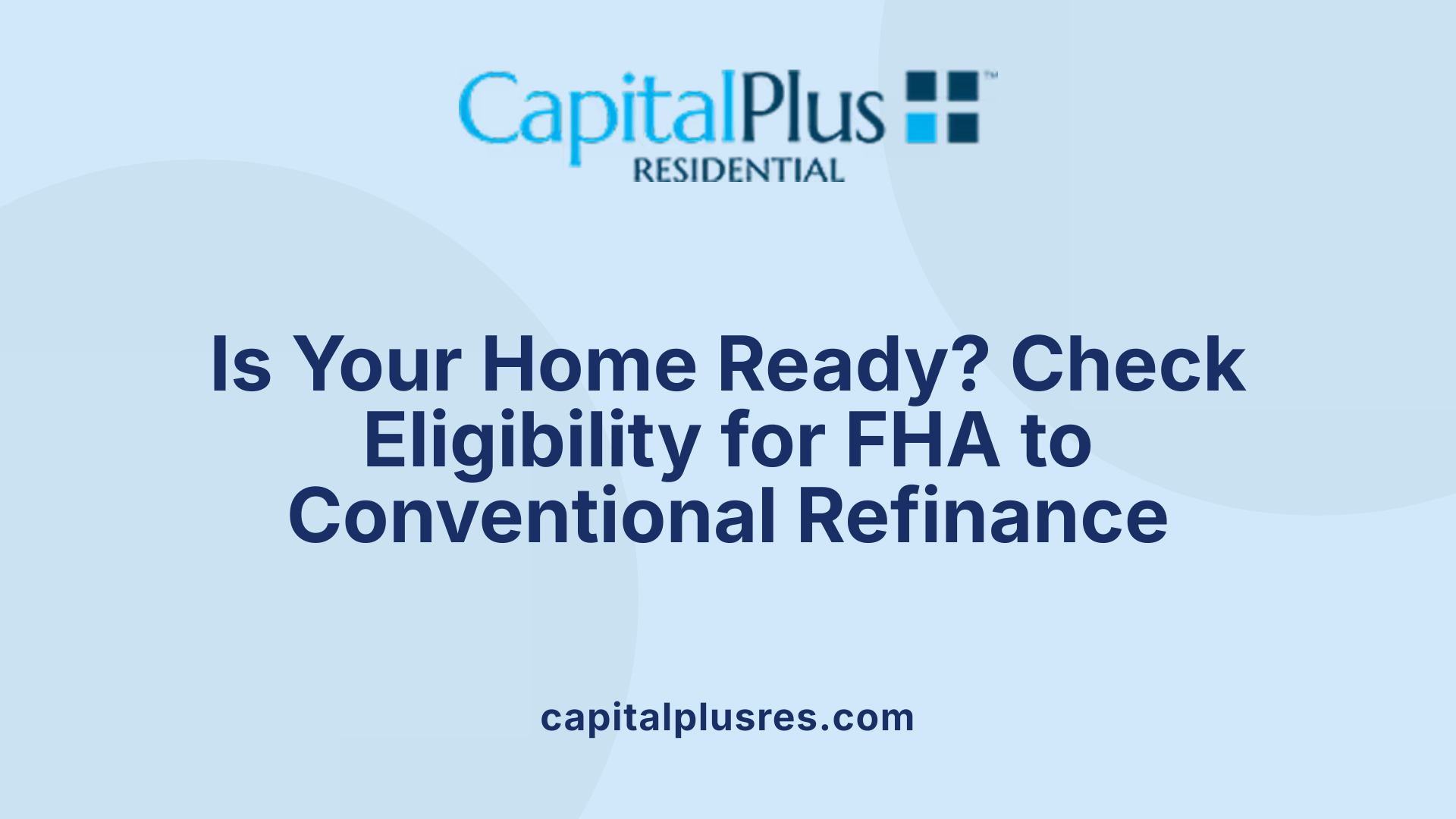
Minimum credit score requirements
To qualify for refinancing from an FHA loan to a conventional mortgage, borrowers generally need a minimum credit score of 620. However, to access the best interest rates, a credit score of 740 or higher is ideal. Maintaining or improving credit scores before applying can significantly improve approval chances.
Equity requirements (minimum 20%)
Borrowers must have at least 20% equity in their home to refinance into a conventional loan and avoid private mortgage insurance (PMI). This equity is typically confirmed through a home appraisal during the refinancing process. Having this equity threshold not only eliminates mortgage insurance premiums but also strengthens the refinance application.
Debt-to-income ratio limits
Lenders usually require a debt-to-income (DTI) ratio of 43% or lower, with some allowing up to 45%. Keeping your monthly debt obligations within this limit demonstrates your ability to manage payments on the new loan.
Income verification and documentation needed
Refinancing to a conventional loan involves submitting documentation similar to the initial mortgage application. This includes pay stubs, tax returns, credit reports, and asset statements to prove consistent and verifiable income over at least two years. Stable employment and income history improve the chances of approval.
Mandatory waiting period after FHA loan closing
While some sources indicate no mandatory waiting period, it is common that refinancing after FHA loan closing requires at least six consecutive months of on-time payments before applying for a conventional refinance.
How can borrowers improve their chances of mortgage approval?
Borrowers can enhance their approval probability by improving credit scores, increasing income levels, reducing existing debts, obtaining multiple loan quotes to find favorable terms, building cash reserves, and making larger down payments to increase home equity. Being financially prepared and informed helps streamline the refinancing journey.
The Refinancing Process: What Borrowers Should Expect

Steps involved in refinancing FHA to conventional
Refinancing from an FHA loan to a conventional loan typically starts with the borrower evaluating their eligibility, including having at least 20% home equity and a credit score ideally above 620. The process then moves through application, underwriting, and loan closing.
Documentation required
Borrowers must submit similar documentation as with an initial mortgage application. This includes pay stubs, tax returns, credit reports, and asset statements to verify income stability and financial health.
Home appraisal requirements
A current home appraisal is generally required to determine the property's value and confirm the loan-to-value (LTV) ratio meets the conventional loan standards, often needing to be at or below 80% LTV to avoid mortgage insurance.
Underwriting and approval procedures
Once documentation and appraisal are complete, underwriters evaluate the borrower’s creditworthiness, income verification, debt-to-income ratio (usually not exceeding 45%), and overall risk. Approval hinges on meeting these conventional loan requirements.
Closing the new loan
After approval, closing involves signing new loan documents, paying closing costs—which can range from 2% to 6% of the loan amount—and setting up the new mortgage payment plan. The process replaces the FHA loan with a conventional mortgage, often resulting in mortgage insurance elimination if equity thresholds are met.
How do residential lending services work?
Residential lending services facilitate the refinance by managing the loan application, assessing financial documentation, evaluating offers, underwriting, and ultimately funding the new loan. They guide borrowers through each step to ensure compliance and smooth transition from FHA to conventional financing.
Mortgage Brokerage Services: Enhancing the Refinancing Experience
What are mortgage brokerage services?
Mortgage brokerage services act as intermediaries between borrowers and lenders, facilitating the search for optimal mortgage solutions. Brokers collaborate with numerous lenders to present a variety of loan products tailored to each client's financial situation.
These services go beyond simply connecting borrowers to lenders; they also include educating clients about refinancing options, assisting with mortgage applications, and helping navigate the sometimes complex paperwork. Often, brokers negotiate favorable interest rates and loan terms on behalf of borrowers without charging direct fees, making the process smoother and potentially more cost-effective.
Benefits of using a mortgage broker instead of going directly to a bank
One major advantage of employing a mortgage broker is access to a broader portfolio of loan products compared to what a single bank might offer. This variety enables borrowers to find refinancing options that best suit their needs, such as switching from an FHA loan to a conventional loan to eliminate mortgage insurance.
Mortgage brokers provide personalized guidance through the refinancing journey, from assessing eligibility criteria like credit score and home equity to explaining different refinance types such as rate-and-term or cash-out refinance. Their expertise can help identify cost-saving opportunities, including negotiating better interest rates or spotting lenders who waive certain fees.
While banks may offer quicker processing for their existing customers, brokers deliver a more customized approach, potentially resulting in better financial outcomes. They also help borrowers understand all associated costs, such as closing fees that can range from 2% to 6% of the loan amount, ensuring transparency.
Broker fees and regulation
Most mortgage brokers earn their income through commissions paid by lenders rather than direct fees from borrowers. Brokers are also regulated to protect consumers, ensuring ethical practices and fair treatment throughout the refinancing process.
Using a mortgage broker can significantly enhance the refinancing experience by providing expert advice, access to a large network of lenders, and personalized service aimed at securing the best loan to meet borrowers' unique needs.
Timing and Strategic Considerations in FHA to Conventional Refinancing
Optimal Timing for Refinancing
Refinancing an FHA loan to a conventional mortgage is best considered when the homeowner has built at least 20% equity in their property. This equity threshold allows elimination of mortgage insurance premiums (MIP) and can significantly reduce monthly payments. While there is generally no mandatory waiting period if the borrower meets conventional loan qualifications, lenders typically require at least six consecutive on-time payments on the FHA loan before a rate-and-term refinance. For cash-out refinances, a minimum of 12 months ownership and timely payments is standard.
Waiting Periods and Net Tangible Benefit Requirements
Although FHA to conventional refinancing can be done at any time if standards are met, a net tangible benefit (NTB) is often required. This means the refinance should lower the interest rate, reduce the loan term, or switch from an adjustable rate to fixed rate, providing real financial advantages. FHA Streamline refinances also require NTB, but with fewer documentation demands. A waiting period of six months generally applies before a rate-and-term refinance to qualify for conventional financing.
Market Interest Rate Trends and Home Value Appreciation
Current low interest rates make refinancing appealing for many homeowners by potentially lowering monthly payments or shortening loan terms. Additionally, widespread home value appreciation has increased homeowner equity, enabling more FHA borrowers to meet the 20% equity requirement needed for conventional loans without mortgage insurance.
Costs and Break-Even Analysis for Refinancing
Refinancing typically involves closing costs ranging from 2% to 6% of the loan amount, covering appraisal, origination, credit report, title fees, and more. Homeowners should conduct a break-even analysis to determine how long it will take to recoup these expenses through savings on monthly payments. Refinancing generally pays off if the borrower remains in the home long enough to exceed these upfront costs.
Deciding Between Rate-and-Term Versus Cash-Out Refinance
Rate-and-term refinancing adjusts the loan’s interest rate or term without changing the principal balance, ideal for reducing monthly costs and eliminating FHA mortgage insurance. Cash-out refinancing allows homeowners to tap into home equity for funds but requires a lower loan-to-value ratio (typically not exceeding 80%) and higher credit qualifications. Both options have distinct qualification metrics and benefits, so homeowners should consider their financial goals and credit status when choosing the best path.
Financial Implications: Costs and Savings in Refinancing
What Are Typical Refinancing Fees and Their Range?
Refinancing a mortgage comes with various fees that generally range from 2% to 6% of the loan amount. These fees include origination charges, appraisal fees, credit report costs, title search and insurance, recording fees, and sometimes legal fees. Borrowers should factor these into the total cost of refinancing to evaluate if it makes financial sense.
How Do Upfront and Ongoing Mortgage Insurance Premiums Affect Costs?
FHA loans require an upfront mortgage insurance premium (UFMIP) of about 1.75% of the loan amount, which can be added to the loan balance. Additionally, ongoing mortgage insurance premiums (MIP) are typically paid for at least 11 years or throughout the loan's life, depending on loan terms. Refinancing to a conventional loan can eliminate these ongoing premiums if the homeowner has at least 20% equity.
Can Homeowners Receive FHA MIP Refunds?
Homeowners who refinance their FHA loans within three years of purchase might be eligible for an FHA MIP refund of up to 68%. This refund can help offset some refinancing costs, making the transition to a conventional loan more affordable.
How Does Eliminating Mortgage Insurance Impact Monthly Payments?
Switching from an FHA to a conventional loan after building sufficient equity can eliminate mortgage insurance premiums entirely. This removal directly reduces monthly mortgage payments, potentially saving homeowners hundreds of dollars each month.
How to Break Down Savings Versus Refinancing Costs?
While refinancing can lower interest rates and reduce monthly payments by removing mortgage insurance, the upfront costs must be considered. Borrowers should calculate the break-even point — the time it takes for the monthly savings to cover refinancing expenses. It is generally advantageous to refinance if the homeowner plans to stay in the home beyond this point.
| Cost/Saving Aspect | Details | Financial Impact |
|---|---|---|
| Refinancing Fees | 2% - 6% of loan amount for closing costs | Increases upfront costs |
| FHA Upfront MIP | Approximately 1.75% of original loan | Can be financed into loan |
| Ongoing Mortgage Insurance | Paid for 11 years or life of loan (FHA) | Eliminated after refinancing if equity ≥ 20% |
| FHA MIP Refund | Up to 68% if refinancing within 3 years | Offsets refinancing costs |
| Monthly Payment Savings | Removal of FHA MIP lowers monthly payments | Increases monthly cash flow |
Understanding these financial implications is crucial for homeowners considering refinancing from an FHA to a conventional loan. Careful analysis ensures that the benefits outweigh the costs and that refinancing aligns with their long-term financial goals.
Alternatives to Refinancing from FHA to Conventional Loans
What is the FHA Streamline Refinance program?
The FHA Streamline Refinance is a popular alternative to conventional refinancing for homeowners with FHA loans. It simplifies the refinancing process by requiring less documentation, often no income verification, and sometimes no new home appraisal. To qualify, the existing FHA-insured mortgage must be current and not delinquent. This option allows borrowers to reduce their loan payments or interest rate efficiently.
Who is eligible and what are the benefits of FHA Streamline Refinance?
Eligibility typically requires a consistent history of on-time payments and an existing FHA loan. The program mandates a net tangible benefit, such as lowering the interest rate, switching from an adjustable to a fixed-rate mortgage, or shortening the loan term. Borrowers can also benefit from reduced mortgage insurance premiums, especially if the original FHA loan was purchased between 2010 and 2015, which can translate to noticeable monthly savings.
What other refinancing alternatives are available?
Beyond streamline refinancing, FHA borrowers may consider FHA cash-out refinance loans. This option allows access to home equity by borrowing more than the existing FHA loan balance, but it requires meeting stricter credit and equity requirements. Additionally, for qualified military service members, VA refinance loans—including interest rate reduction and cash-out options—serve as a valuable pathway to adjust loan terms.
What are additional alternatives beyond refinancing?
Homeowners may explore home equity loans or lines of credit (HELOCs) as a flexible means to tap into property equity without refinancing their mortgage. These options can complement or substitute refinancing depending on financial goals, credit situation, and current mortgage terms.
Through these alternatives, FHA loan borrowers have multiple strategies to improve their financing situation even if conventional refinancing is not immediately viable.
Challenges and Drawbacks to Consider Before Refinancing
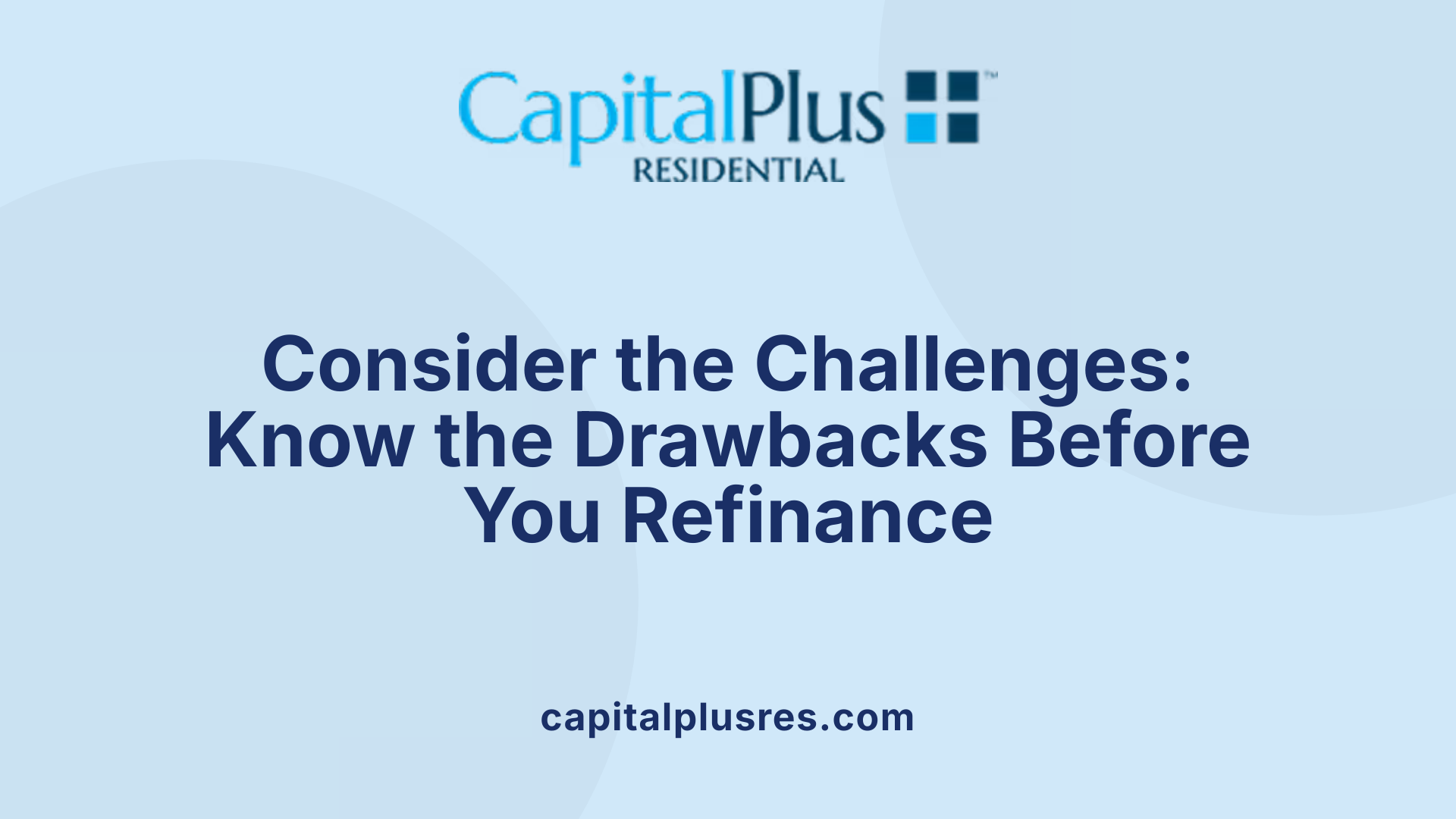
Higher Credit Score Requirements for Conventional Loans
One of the main hurdles in refinancing from an FHA loan to a conventional loan is the stricter credit score requirement. While FHA loans are more lenient, allowing credit scores as low as 580 or sometimes even 620, conventional loans typically require a minimum credit score of 620. For the best rates, a score of 740 or higher is often needed. This higher threshold can disqualify borrowers whose credit hasn't improved significantly since obtaining their FHA loan.
Potentially Higher PMI Premiums with Lower Credit Scores
Even with a conventional loan, borrowers who do not have top-tier credit scores may face higher private mortgage insurance (PMI) premiums. This means that while refinancing might eliminate FHA's ongoing mortgage insurance premiums (MIP), the cost of PMI on a conventional loan could remain significant if the borrower's credit is not strong. Thus, refinancing does not guarantee lower insurance payments for all.
Need for Higher Equity and Stable Income
To qualify for a conventional refinance, borrowers generally must have at least 20% equity in their homes to avoid mortgage insurance. This can require a recent home appraisal confirming sufficient value. Furthermore, lenders look for stable, verifiable income—typically income documented over at least two years—and a maximum debt-to-income (DTI) ratio usually capped around 43% to 45%. Meeting both equity and income requirements can be challenging for some homeowners.
Risks If Planning to Move Soon or Insufficient Savings for Closing Costs
Refinancing involves upfront costs, usually ranging from 2% to 6% of the loan amount, including appraisal fees, origination fees, and other closing expenses. If a borrower plans to sell or move in the near future, they may not recover these costs before moving, reducing the financial benefit of refinancing. Additionally, many borrowers underestimate the importance of having sufficient savings to cover these closing costs, potentially placing them in a tight financial spot post-refinance.
These challenges highlight the importance of carefully evaluating individual circumstances before deciding to refinance from an FHA to a conventional loan.
Maximizing Success: Tips for a Smooth FHA to Conventional Refinance

Preparing Necessary Documentation
Gather all essential documents to streamline the refinance process. This includes recent pay stubs, tax returns, credit reports, and asset statements. Since refinancing from FHA to conventional requires documentation similar to initial mortgage applications, having these ready speeds up approvals.
Improving Credit and Financial Profile
Aim to boost your credit score to 740 or higher for the best conventional loan rates, though a minimum of 620 is required. Lowering debt-to-income ratio below 43% and ensuring stable, verifiable income over at least two years will strengthen loan eligibility.
Choosing the Right Mortgage Broker or Lender
Work with lenders experienced in FHA to conventional refinancing. They can guide you through specific requirements, including the mandatory minimum 20% home equity standard, and help identify if you qualify for programs like FHA Streamline Refinance.
Evaluating Multiple Loan Offers
Shop around and compare offers from various lenders. Look beyond interest rates—consider loan terms, mortgage insurance costs, and closing fees. Refinancing typically costs 2% to 6% of the loan amount, so evaluate total expenses against potential savings.
Understanding Long-Term Financial Implications
Consider how refinancing affects your monthly payments and overall loan lifespan. Eliminating FHA mortgage insurance premiums can save you significantly, but ensure you plan to stay in your home long enough to recoup closing costs. Also, refinancing options like cash-out refinancing can unlock home equity but may increase monthly obligations.
Making Informed Choices for Home Financing Success
Refinancing from an FHA to a conventional loan is a significant financial decision that can unlock substantial savings by eliminating mortgage insurance premiums and potentially lowering interest rates. Homeowners should carefully assess their eligibility, understand the detailed refinancing process, and weigh the costs against potential benefits. Utilizing mortgage brokerage services can provide valuable guidance and access to competitive loan options tailored to individual circumstances. Considering alternatives such as FHA streamline refinance and evaluating timing can further optimize outcomes. Ultimately, thorough preparation and informed decision-making enable borrowers to secure more favorable mortgage terms, aligning with their long-term financial goals and enhancing their homeownership experience.
References
- Refinancing Your FHA Loan to a Conventional Loan
- Refinancing FHA to Conventional: Requirements & Benefits
- Guide to refinancing an FHA loan to a conventional loan
- How To Refinance an FHA Loan to a Conventional Loan
- Can You Refinance an FHA Loan to a Conventional Loan?
- FHA Refinance Loans: Guidelines & Benefits
- Streamline Refinance Your Mortgage
- What Is a Mortgage Broker?
- What Is a Mortgage Broker and How Do They Help ...
- Is it Better to Use a Mortgage Broker or a Bank?
Latest Blog
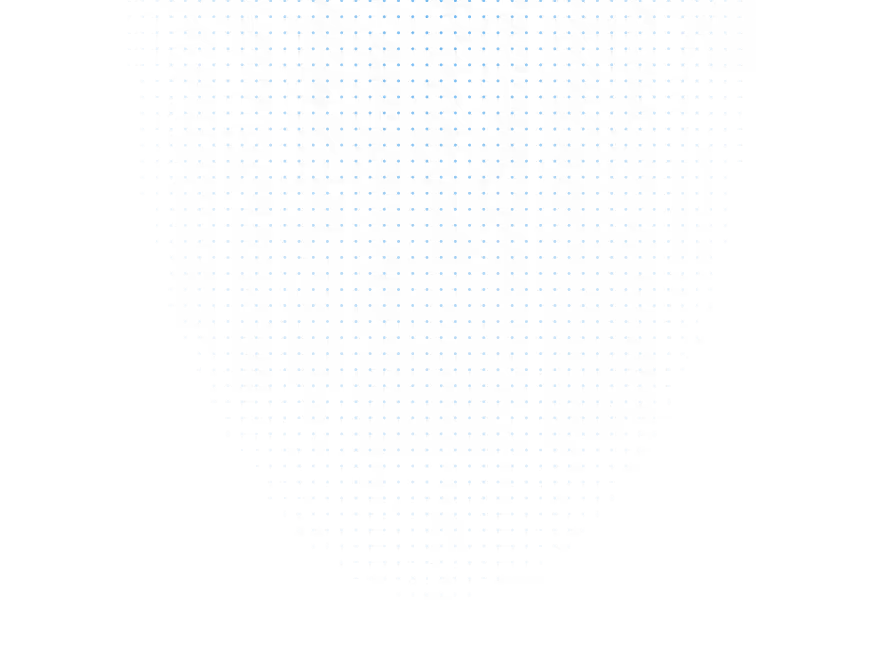

Get Pre-Approved Today
Start your secure online application now so you can get pre-approved for a mortgage (and close on your dream home) quickly within 5 minutes.


